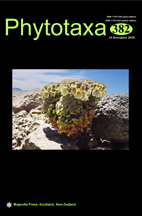Abstract
Chenopodium luteorubrum is described as a new species of Chenopodiaceae (Amaranthaceae sensu APG) from coastal habitats along the Sea of Japan in the Russian Far East. It has been demonstrated that this allohexaploid species (2n = 6x = 54) combines in its genome the subgenomes ‘A’ (closely related to or inherited from C. bryoniifolium), ‘C’ (unknown or extinct species), and ‘D’ (C. acuminatum s. l.). That subgenome combination is unique; it differs from the combination in C. album s. str. and closely related hexaploid taxa, which have ‘B’ (derived from C. ficifolium/C. suecicum), ‘C’, and ‘D’ subgenomes. Here we describe and illustrate the new species and provide information on its evolution, ecology, morphology, karyology, and distribution. The new species is compared with morphologically somewhat similar taxa C. album s. str. (hexaploid),
C. suecicum (diploid), C. betaceum s. l. (C. strictum auct., tetraploid), and C. acuminatum (diploid).

